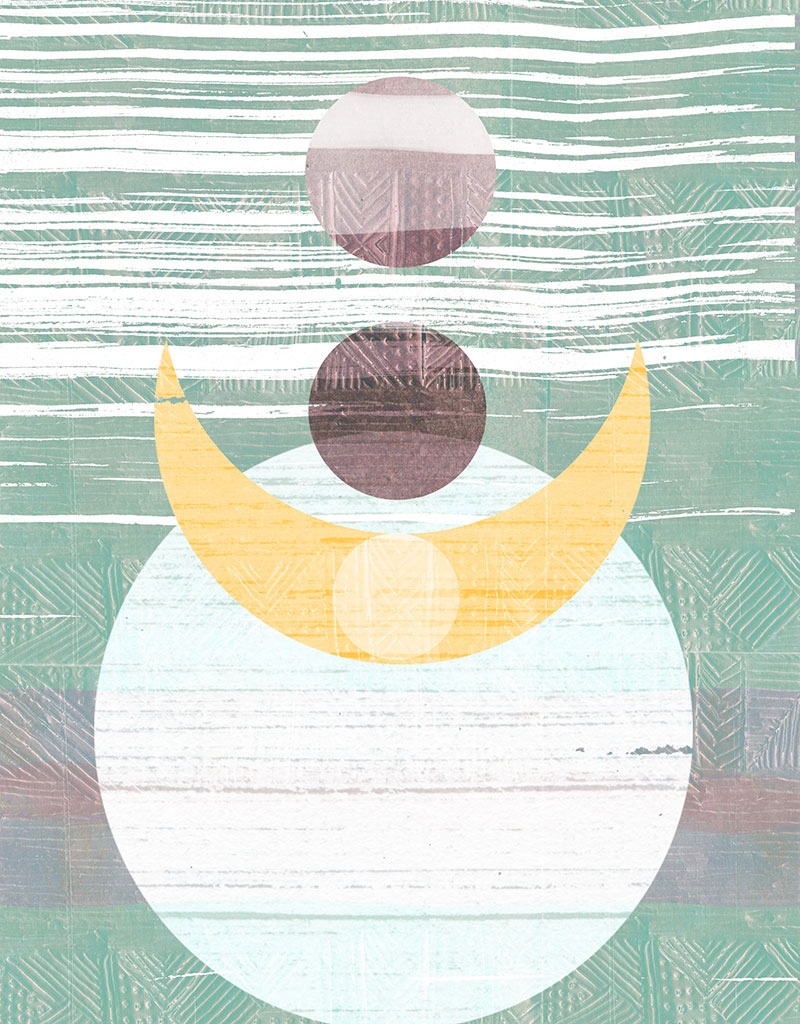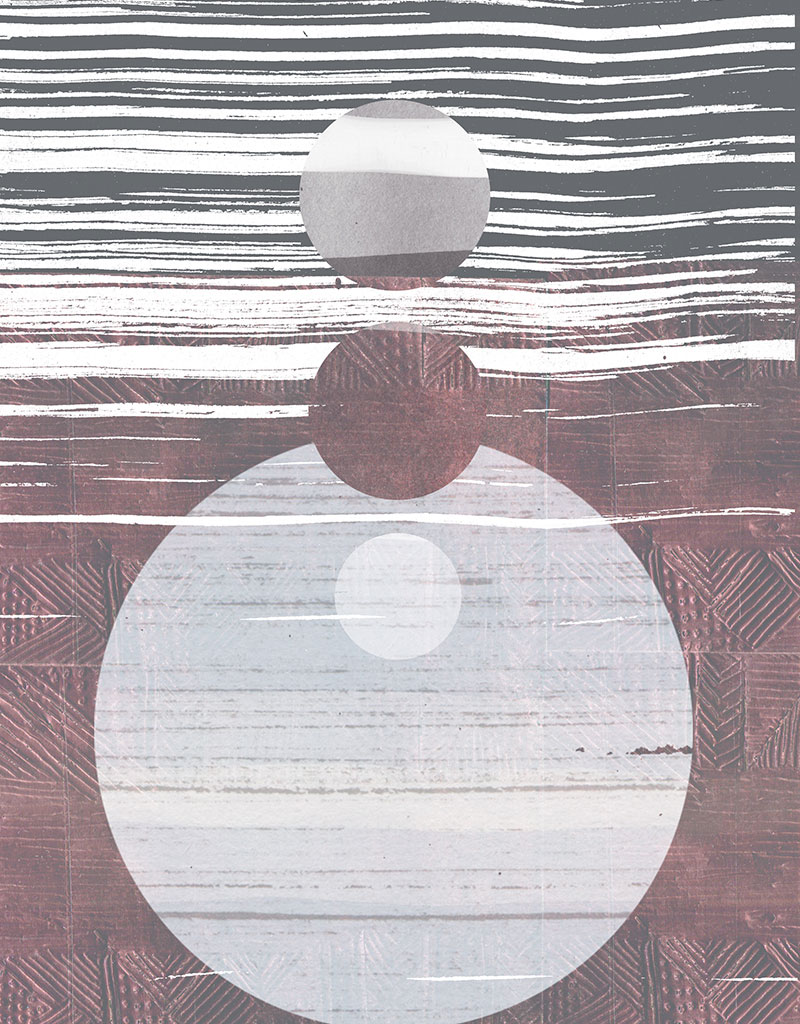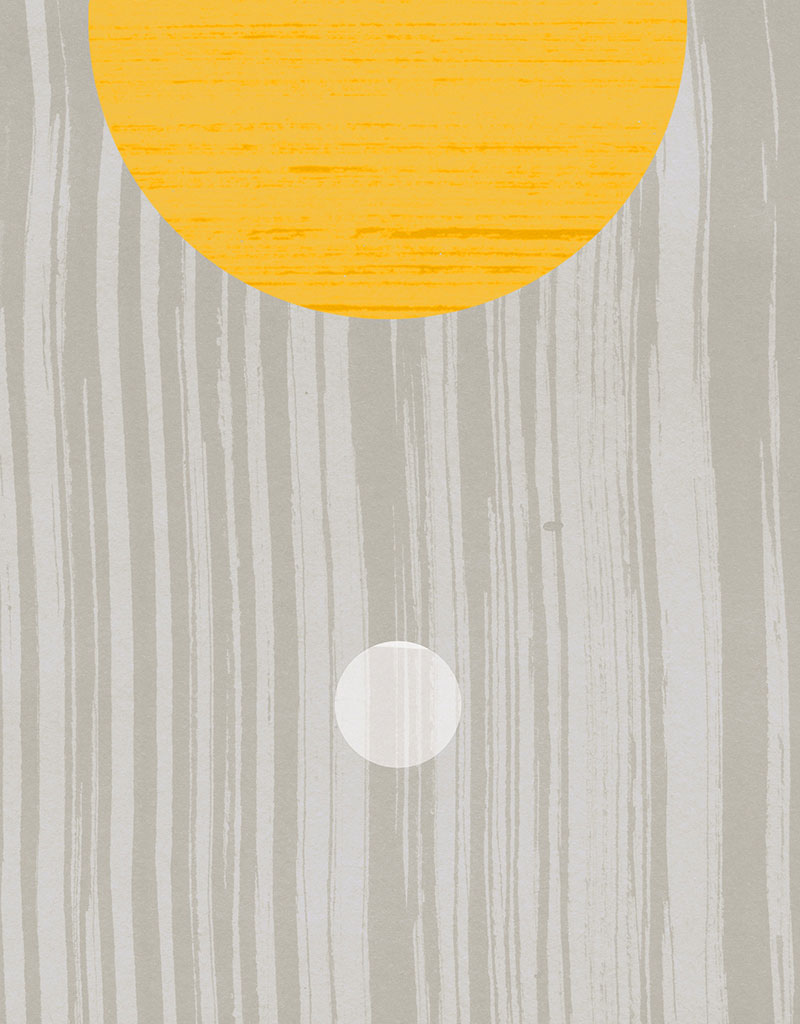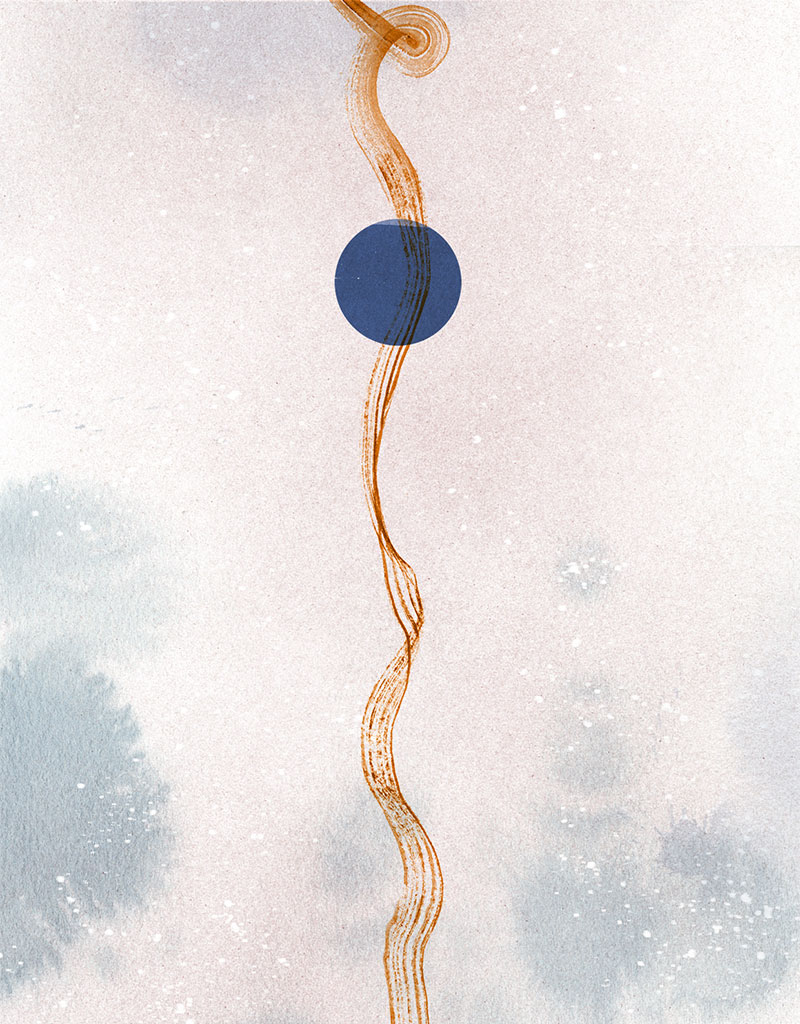Nilakshi Sharma
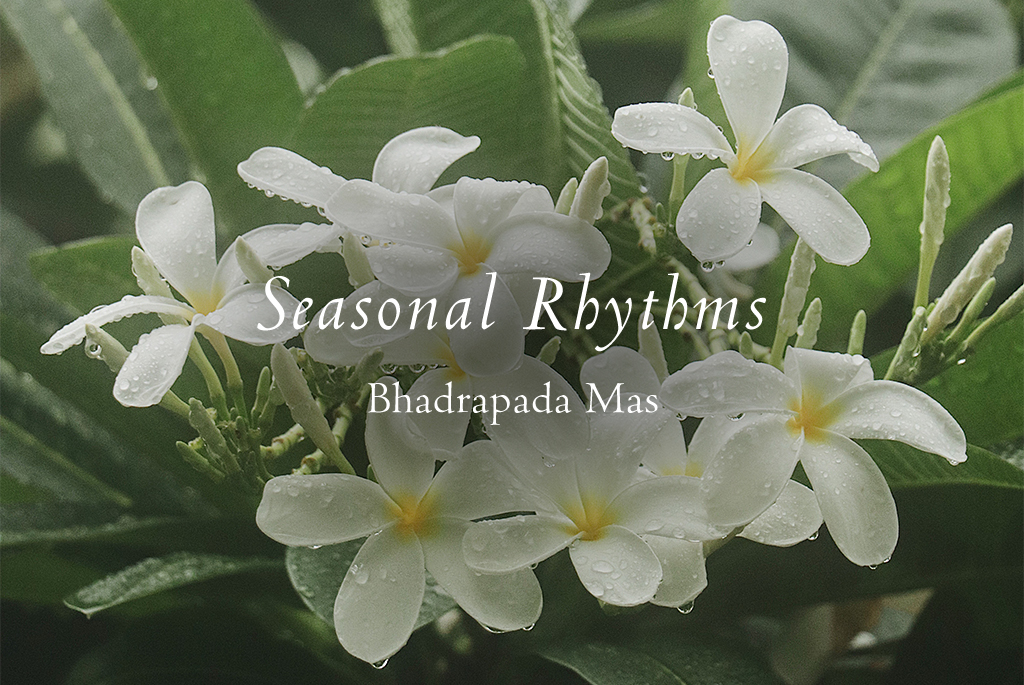
Water overwhelms our senses and the earth in the first half of Bhadrapada mas, the second month of Varsha rtu. There is a limpid beauty to this time, when water flows and overflows; when the air is heavy with moisture and the waterlogged-earth and the leaden skies seem to merge into each other when the rain falls in grey sheets of water.
And yet, when the rainfall stops and the Sun emerges for a short while from behind the veil of water laden clouds, it reveals the dazzling beauty of jewel-toned greenery, with the water drops glistening like crystals.
Since the rhythms of nature are deeply intertwined, by the time the lunar month of Bhadrapada begins, the second half of the solar year – Dakshinayana, has already started. What is common between the lunar month and the second half of the solar year is that both are seen as times when the dominant element is water, and the energy is characterised as feminine. Thus, in this month we all keenly feel the loss of the energy of the Sun and the Agni in our body is also correspondingly low. Mentally, this can be a time when we feel adrift and unmoored. As the month begins to wind down, the energies of the coming season also begin to manifest – further destabilising the environ and thus impacting our bodies and minds.
Self Care & Bhadrapada
In the Ayurvedic understanding of the body our digestion is seen as a form of fire or Agni, and a healthy digestive system in turn leads to a successful elimination of all waste from the body. When our digestion falters so does our body’s ability to eliminate all the waste. And this is seen as one of the root causes of disease in the body. Thus, in Ayurveda there is a constant emphasis on keeping our digestive fire burning brightly. At a time when the element that dominates the environment is water, our digestive fire is at its weakest. And thus, needs nurturing. Here are some time tested traditional Ayurvedic practices for helping our bodies stay healthy in this time of overwhelming water.
- Agni Tea: This easy to make tisane uses warming spices that aid our digestive process. Drink it once a day at least 30 minutes before your meal. This recipe is from the Sivananda Yoga Vedanta Centre.
1 tsp ground Cumin + ½ tsp freshly ground Pepper (or long Pepper for Pitta dominant constitutions) + 2 to 3 pinches of ground Ginger + 1 pinch of Rock Salt.
Add the spices to 1 cup of water in a saucepan. Bring to a boil and then simmer for 10 minutes. Cool and drink.
The second Ayurvedic practice that helps our body is a selfcare ritual that encourages the elimination of toxins but more importantly, awakens and activates our skin, which is our body’s first line of defence. This is particularly good in Varsha rtu when we can be more prone to skin infections than any other season.
- Dry Powder Massage: As per Ayurvedic wisdom, “Dry powder massages are heating, stimulating, and dehydrating, making them beneficial for weak Agni and excess Kapha.” You can use Triphala powder for the dry massage as it is tri-doshic or you can make your own dry powder for body massage. The Sivananda Centre’s recipe for a dry massage powder:
300g Chickpea flour + 2 tbsp dried Basil + 2 tbsp dried Sage + 1 tbsp dried Neem leaf powder + 1 tbsp Shallaki powder (optional) + 1 tbsp Amlaki or Triphala powder + 2 tbsp Rock Salt (finely ground).
Mix well and store in a glass jar in a dry place away from light.
To practice: Take as much of the dry massage powder as needed to gently massage your entire body. Post massage rinse body with lukewarm water and pat dry. Avoid the use of soap.
Caution: Body massage should not be done immediately after eating a meal. Either wait a few hours post meal or do the massage when your stomach is empty.
- Sea Salt Scrub: Another simple way of keeping our skin healthy and nourished during this season is a simple sea salt scrub used up to two times a week. Take a handful of coarsely ground sea salt. Add enough Coconut oil to make a very loose paste. To this you can now add a drop or two of your preferred essential oil for a fragrant touch. Scrub damp skin in gentle circular motions with a handful of scrub. Rinse off with water and pat the skin dry. While the Coconut oil moistures and nourishes the skin, the antibacterial quality of salt will ensure skin health and a gentle exfoliation. Because of the aura cleaning properties attributed to salt by spiritual practitioners, this is also good for cleansing yourself in terms of energy.
Grounding Rituals
Bhadrapada month itself is a time that is dominated by the fluidity of water. And it is also the last month of the season of rains, which means that the last ten days or so of the month actually are a time of transition, when the energy of the environment begins to transform into the energy of the oncoming season. Thus, this is a month when it is easy for us to feel adrift and unmoored. Grounding practices at this time can be of great help. One of the oldest and most traditional grounding practice is simply lighting a diya and gazing at its flame for a few minutes. There is something that is at once soothing and hypnotic in the flame that dances on the tip of a cotton wick. Given the elemental dominance of water at this time, spending time in front of a lit diya can also have a balancing impact on our body and mind as it brings to bear the impact of the fire element on our senses.
Another practice of grounding is through the olfactory senses. Flowers and resins and their scents can have a powerful impact upon our nervous system. Grounding scents are those that help us feel rooted within ourselves, that help to still the chatter of anxiety. Three potent scents for this are Frankincense, Sandalwood and Vetiver. Each of these three scents has the ability to calm our senses by offering us a feeling of being rooted. They offer us, in their fragrance, the stabilising energy that allows to feel centred within ourselves. You can use them in any form that works for you – add a few drops of any of them individually in your weekly sea salt scrub routine. Or use a blend that has one or more of these essential oils. Use incense sticks that offer these fragrances or even create a body oil blend with one or more of these oils plus any other that you want to create your desired fragrance profile. A very basic recipe that will work for all skin types:
Apricot oil 50 ml + Jojoba oil 50 ml + 40 drops of essential oil
You can choose a single essential oil or combine more than one as long as the essential oils do not exceed a total of 40 drops per 100 ml of seed oil. Please note that essential oils are potent and cannot be used on the skin directly. They must be diluted in the correct proportion in a base of seed oils. With essential oils, less is more. The recommendation here is to stay under a 2% dilution.
Use the oil blend for a body massage as desired. Because the carrier oils suggested are light, this oil blend is also ideal for post bath use. Or you can create a nightly ritual of massaging the soles of your feet with this blend. Both the ritual and the blend will have a grounding effect.
Festive Rituals
Bhadrapada is one of the two months of the season of love and longing. And in our mythology, folklore and even popular culture the beauty and delight of lovers, the joy of the lover in his beloved, is best exemplified by Radha and Krishna. The dark blue god, who is also a cowherd, frolicked endlessly with his beloved Radha in the verdant forests of Vrindavan. To each season there is a unique celebration of Radha and Krishna’s Ras Leela, the divine dance of love. And it is in the month of Bhadrapada that both of their birth anniversaries are celebrated. In a stunning and poetic symmetry, they are both born on Ashtami – the eighth tithi of the Moon. Krishna, the blue god is born in the dark phase as the Moon decreases towards Amavasya. But radiant Radha is born on the eighth day of the waxing Moon as it grows in luminosity towards Purnima.
This year Janmashtami falls on Monday, 26 August while Radha Ashtami will be celebrated on Wednesday, 11 September.
While Radha and Krishna’s birth anniversaries are celebrated with fervour in Bhadrapada, the reigning deities of this month, indeed of both the two months of Varsha rtu are Shiva and Parvati. And thus all of the three Teej celebrations are dedicated to Shiva and Parvati. Hariyali Teej came in Shravana and the remaining two Teejs – Kajari Teej and Hartalika Teej will be celebrated on Thursday, 22 August and Friday, 6 September respectively.
Ganesh Chaturthi will also arrive with its fanfare and fervour on Saturday, 7 September.
As Bhadrapada mas unfolds, the waters that rejuvenate and renew the earth, will slowly begin to recede and the earth shall emerge refreshed and ready to offer us its abundance and beauty in the next season.

